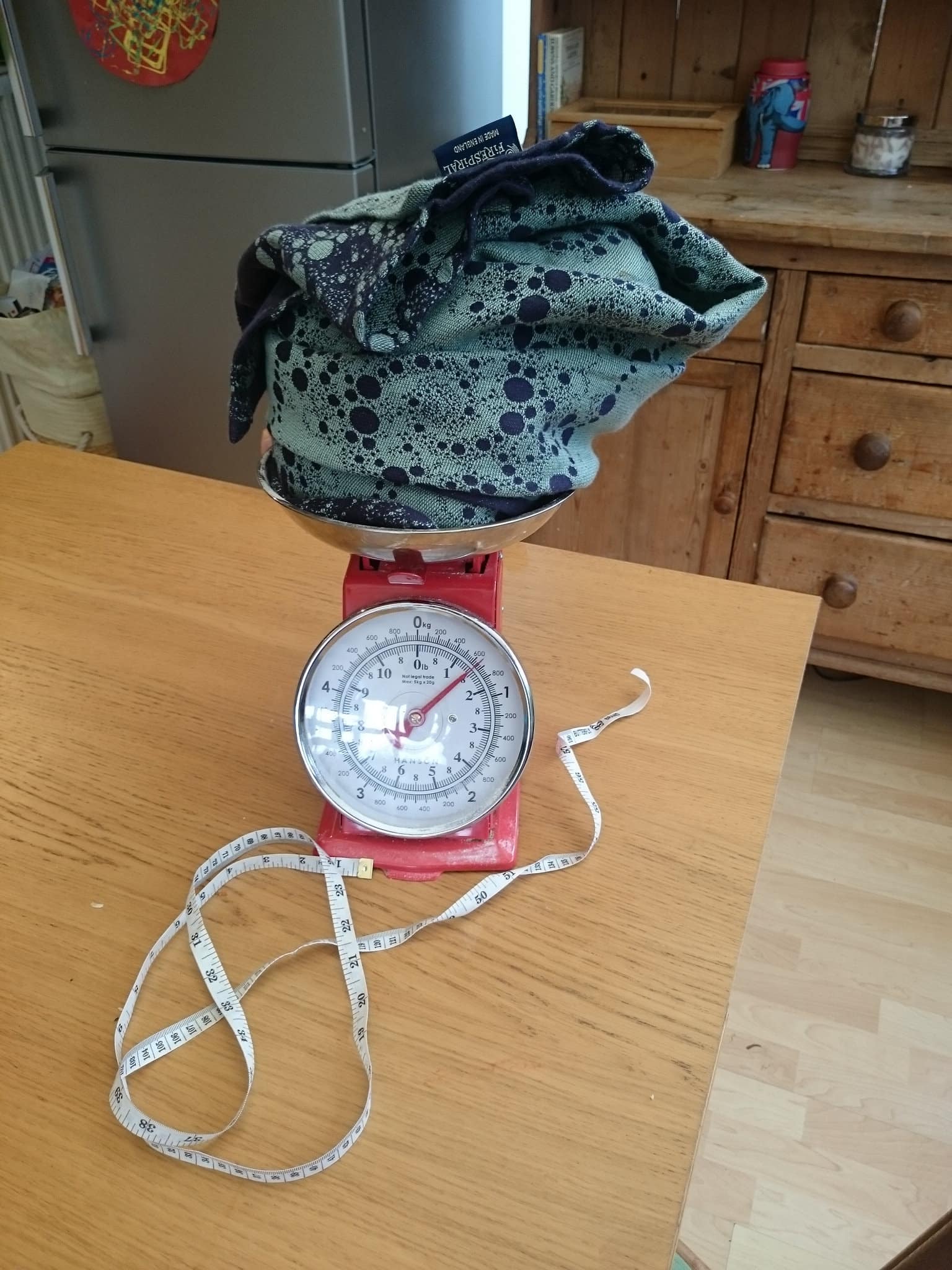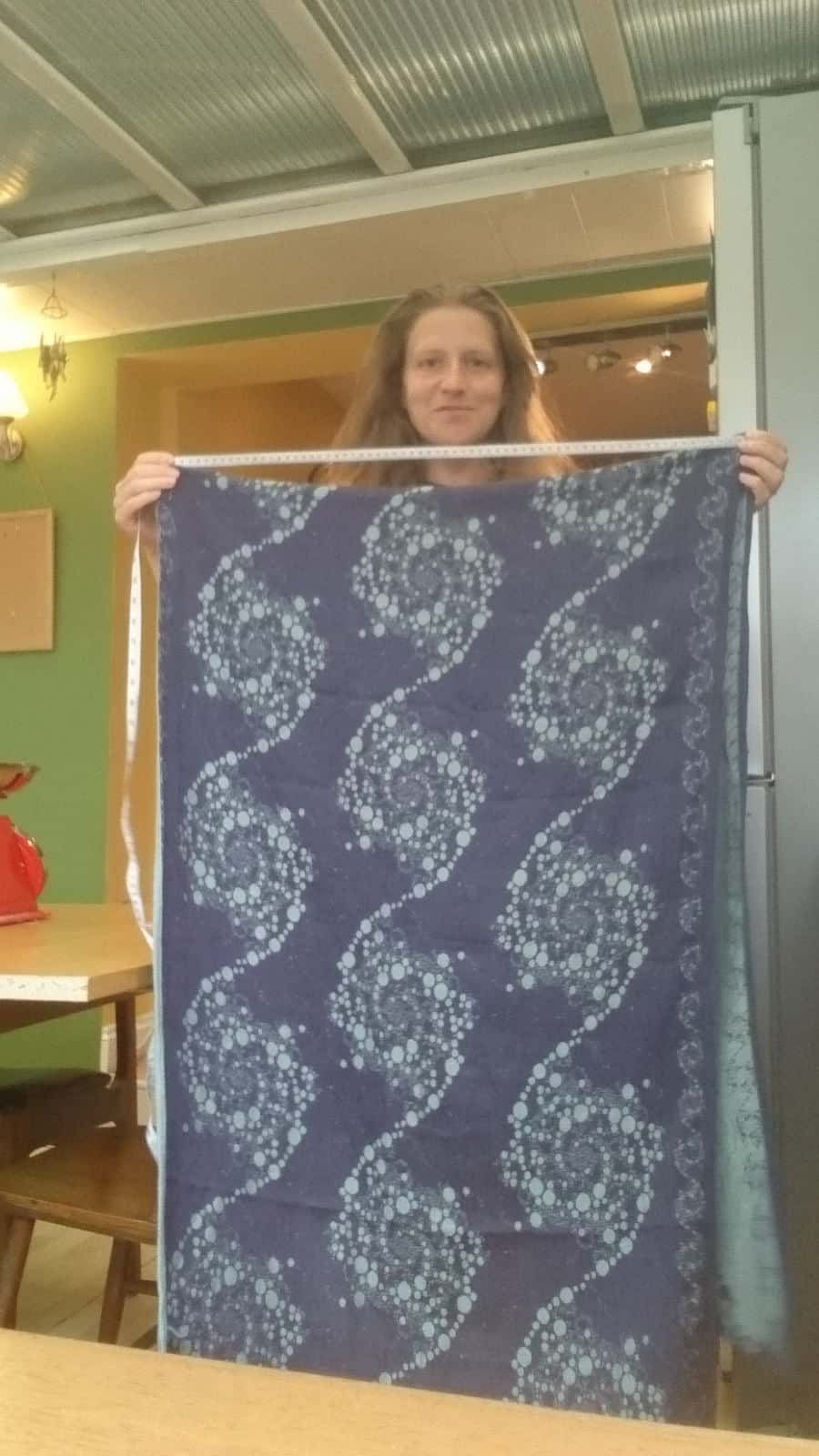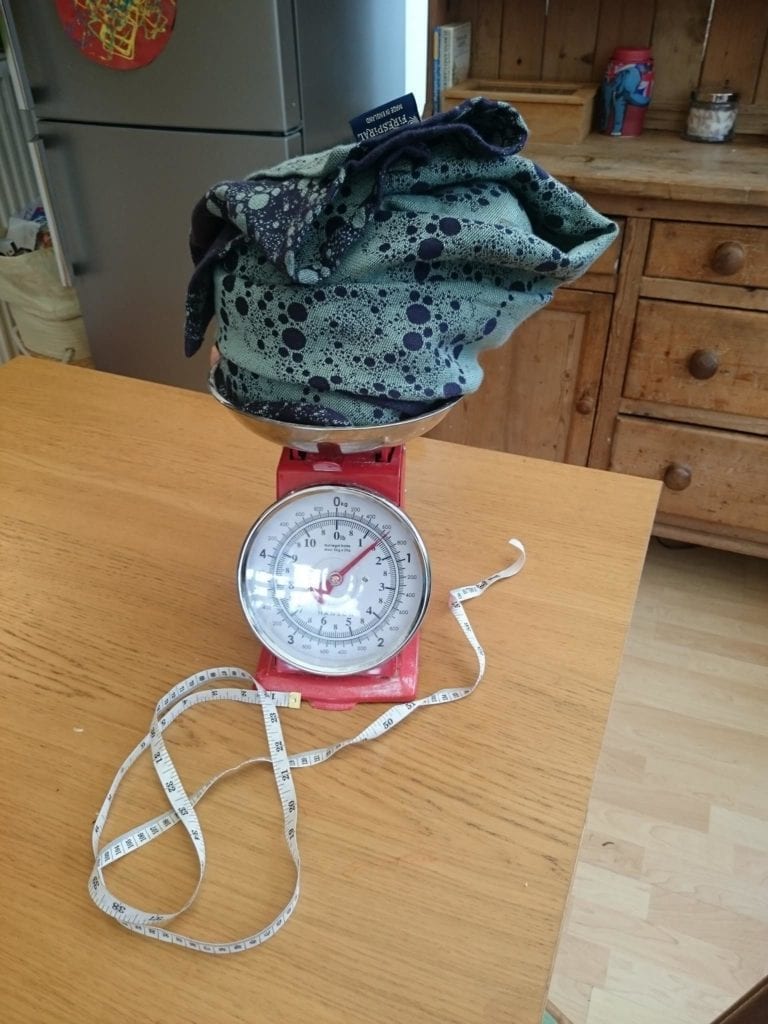Understanding and Caring for Wraps
How do I calculate the GSM of a woven wrap (in 4 easy steps)?
How do I calculate the GSM?
Carry on reading to learn how to calculate it yourself, or jump to our easy GSM calculator and we’ll do it for you!
Knowing your way around the metric system is a bonus for working out the gsm, as it requires you to measure in metres and grams! As a reminder, there are:
100 centimetres (cm) in a metre (m) and 1000 grams (g) in a kilogram (kg).
To give you an idea of imperial weight equivalents, one metre is just over 3 feet long and 1 kilogram weighs 2.2 lbs.
We’re guessing that you don’t fancy snipping a 1 metre square piece of cloth out of your wrap, but fear not! Calculating the overall gsm is very simple to do, regardless of dimensions. All you need to do is divide the area of the wrap by its weight, but we’ll break down how to do that in practice.
Total Time: 5 minutes
Calculate the GSM step 1: Weigh your wrap in grams.
Jen doesn’t have any flat scales and ends up balancing the whole thing in the kitchen scales (which is a bit of a faff but does the job)! It is important to make sure that the figure you come up with is in grams rather than kilograms- especially if you are using flat bathroom scales which are designed for heavier weights.
If your scales give their weight in KG then simply multiply that figure by 1000 to convert to g
For example 1.23kg = 1230g
Calculate the GSM step 2: Measure your wrap.
We advise you to measure ‘soft tape measure in hand’ (STIH) to get the most accurate measurement results, and we’ve explained why and how to do this. As with the weight, it is important to get your results in metres, so a wrap that measures 4 metres and 22 centimetres (422cm) would be 4.22m for the purpose of the calculation.
You need to get two measurements from your wrap. The first is the length along the hem, the second is the width of the wrap from one hem to the other. Measure straight up at right angles to the long hems. DON’T measure the sloped tapered edges. You’re not measuring the perimeter of the wrap! Your wrap is a parallelogram, which is essentially a squashed rectangle, so the two pointy tapered ends balance each other out in terms of the overall area.
Calculate the GSM step 3: Calculate the area of the wrap
Multiply the length measurement by the width
For example 4.22m x 0.68m = 2.87metres squared
Calculate the GSM step 4: Divide the weight by the area
Take the weight in grams and divide it by the area that you just calculated. It is likely that your answer will be somewhere between 100 and 500, so if you’ve got a result of 0.00002, then you’ve probably made a mistake and should recheck! You should get that same result even if you measure and weigh a longer (or shorter) version of the same wrap, because whilst the figures will change, the weight to area ratio won’t.
For example 1230g / 2.87m2= 428 gsm
Easy as that!
Tools:
- Weighing scales
- Tape measure
Materials: Your woven wrap(s)
What does GSM mean?
GSM stands for “grams per square metre” (also written as Gr/m²) and tells you much a 1m square piece of any cloth would weigh.
GSM gives a rough scale that allows you to determine the thickness of the cloth- with 150GSM being pretty thin and 400GSM+ being a much thicker wrap. What is considered ‘medium weight’ differs from country to country and also changes over time as carrying fashions and styles alter. Firespiral’s medium weight tends to be around 245gsm.
Why is GSM useful for wrappers?
- It gives you an idea of how thick/heavy a wrap is, regardless of its length.
- It allows you to directly compare wraps that are different lengths/widths by using a standardised measurement
- You can calculate the gsm using your wrap and should get (pretty much) the same answer as another person with the same wrap- even if they are both different lengths.
What are the problems with GSM?
It only gives you one part of the puzzle and needs to be understood in context.
A good analogy is with the BMI (body mass index) scale. The BMI uses just your height and weight in its calculation to determine whether or not you are at a healthy weight. We know that the BMI is flawed in that it doesn’t take into account other factors such as muscle tissue, build, fitness etc and GSM is the same. There are other factors like weave and fibre blend which will affect how a wrap feels and behaves, so two wraps with the same GSM may not feel or wrap in the same way. GSM needs to be understood in the context of these other factors. It is unhelpful, for example, to decide that a wrap would be unsuitable for you based purely on GSM alone.
